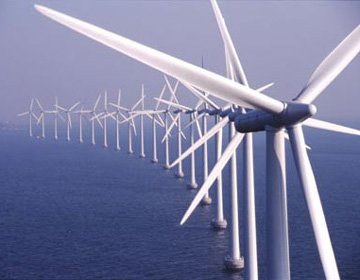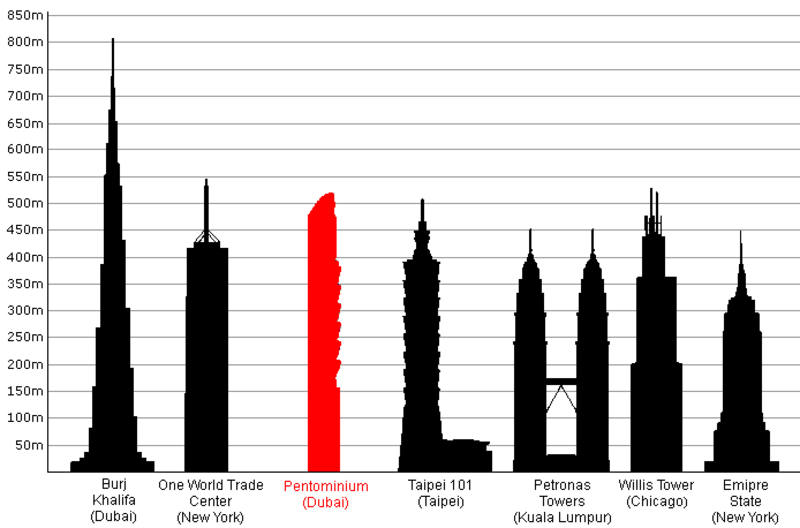Treehugger shows a 1 gigawatt magnetically levitated wind power generating turbine
Maglev Wind Turbine Technologies proposes this technology
var pubId=12340;
var siteId=12341;
var kadId=18004;
var kadwidth=336;
var kadheight=280;
var kadtype=1;

It looks like it is 200 meters tall and 100 meters in diameter, based on the car and streetlights in the foreground
UPDATE:
A regular 5 megawatt wind turbine has about 120 meter tall tower and a 126 meter diameter blades They supply around 13 million kilowatt hours per year each. A 200 times larger wind rotor would then proportionally have 2.6 billion kwh.
The chinese claimed that the magnetically levitated wind turbines could be 20% more efficient. This would increase the energy generated to 3.12 billion kwh.
The average US home uses about 10000 wkh per year
Maglev Wind Turbine Technologies is claiming 8.75 Twh would be generated. This is operating efficiency equal to a nuclear power plant. Even if they are 50% more efficient than a regular wind turbine (because of more consistent wind at higher altitude and 20% superconducting efficiency) I do not see them doing better than about 5 billion Twh maximum. This would be about 500,000 homes. They could do better but they would need a bigger turbine with a higher maximum power rating.
A wind turbines operating load factor is less because of the inconsistency with which winds blow. although a very tall wind turbine
The benefits of magnetic levitation for wind turbines is discussed
Wind is more consistent at 270 meters (1000 feet) A large wind turbine that could take advantage of that could achieve operating efficiency of 40-50%.

Offshore wind farm
A nuclear power plant with a 1 Gigawatt rating would produce 8 to 9 billion kwh per year.
The tallest buildings and structures in the world from wikipedia
There are only about 20-30 man-made structures that are taller than 300 meters.
Tall building profiles
New building materials could allow the giant wind turbine to be made taller and lighter. New materials such as carbon nanotube reinforced polymers or nanograin metals.
MORE READING:
My other articles related to wind energy and comparisons to other energy sources
Shares of American Superconductor Corp. (Nasdaq: AMSC) got a jolt in pre-market trading this morning after the energy technologies company, announced that it received a follow-on $70 million order for wind turbine electrical systems from Beijing-based Sinovel Wind Corp. Ltd.
American Superconductor’s subsidiary, AMSC Windtec, will ship the customized electrical systems to Sinovel in 2008 for use in Sinovel’s 1.5 megawatt wind energy systems.
AMSC Windtec turbine electrical systems provide wind turbine operation by controlling power flows, regulating voltage and controlling the pitch of wind turbine blades to maximize efficiency.

Brian Wang is a Futurist Thought Leader and a popular Science blogger with 1 million readers per month. His blog Nextbigfuture.com is ranked #1 Science News Blog. It covers many disruptive technology and trends including Space, Robotics, Artificial Intelligence, Medicine, Anti-aging Biotechnology, and Nanotechnology.
Known for identifying cutting edge technologies, he is currently a Co-Founder of a startup and fundraiser for high potential early-stage companies. He is the Head of Research for Allocations for deep technology investments and an Angel Investor at Space Angels.
A frequent speaker at corporations, he has been a TEDx speaker, a Singularity University speaker and guest at numerous interviews for radio and podcasts. He is open to public speaking and advising engagements.



Comments are closed.